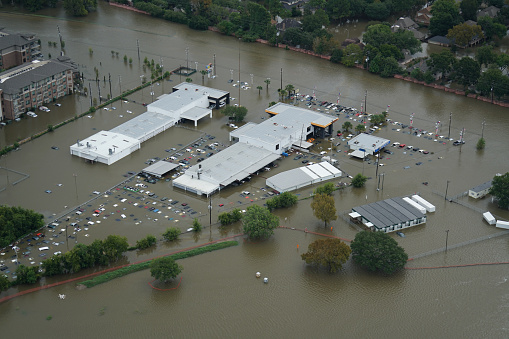The best way to protect your business from a natural disaster is with a Business-Continuity Plan. However, what steps should you take if you don’t have one in place? These tips and practical resources will help get your business back online after natural disasters, such as hurricanes.

Natural disasters can have a devastating effect on your business, and if your small business was impacted by Hurricane Harvey or Irma, you may still be in shock, and not sure how to bring your business back online. Whether your building was physically underwater, or you’re simply suffering from extended power outages, taking first steps towards IT disaster recovery is critical. Businesses with a robust business-continuity plan are already several steps ahead. But, even without a pre-determined strategy in place, your technology team can quickly start the road to recovery.
Assess the Damage
The most important thing to know during a disaster is that you’re likely in good company—Less than 25 percent of businesses in the U.S. have a comprehensive disaster-recovery and business-continuity strategy in place. Hopefully, the majority of your data and software were stored offsite, in which case it’s merely a case of ensuring your team can gain access to it.
Focus on getting these critical digital functions online even while floodwaters are high and winds are still blowing. (Once your family and staff are safe, of course.) You may find yourself in a situation where you have remote access to your data, but no idea if your office is still standing, or whether hard-copy records, machinery, and stock were damaged.
Establish a Temporary Home and Take Advantage of Loans.
Finding a temporary place that you can declare home base for your business is a critical first step towards rebuilding. If your building is uninhabitable or inaccessible, any location will do in a pinch. If you can’t reopen in your current location, there are plenty of low-interest loans available to help you get your business back up and running. Here are a few options to explore:
- Apply for Small Business Administration or USDA disaster loans (depending on your type of business).
- Create a GoFundMe or other fundraising account.
- Apply for federal disaster assistance with FEMA.
While you may not want to add debt to your organization during this challenging time, the most important thing to do is to return to something resembling normal operating levels as quickly as possible. This is one of the best ways to ensure the long-term viability of your business.
Even if employees have to work remotely in a fast-food dining room to have power and access to the Internet, they need a way to contact key customers and suppliers. These loans can help you re-establish operations, purchase inventory, start cleanup efforts, rent a temporary space, and get back online quickly.
Accept Assistance.
The U.S. government provides a variety of assistance options, from crisis counseling services like the Crisis Counseling and Assistance and Training Program (CCP), to tax relief for businesses struggling after a recent natural disaster. Ask to receive expedited refunds, or even delay your tax filings—This is especially important if your pertinent physical records were destroyed by water, fire, smoke or mud.
Find our about various tax-relief options on www.IRS.gov. Free legal services are also available from FEMA to assist with landlord agreements, insurance claims, and more. Want to learn about all of your options in one place? Check out this free online questionnaire that provides targeted recommendations for services that will best support your organization.
Consider Your Options.
Perhaps there are changes you’ve been planning to make to your business such as discontinuing services or making a shift in strategy—As difficult as it may be, this may be the ideal time to reassess operations and use federal funds to rebuild a more streamlined and cloud-based infrastructure for your business.
This could mean anything from a new telephone system that follows your employees regardless of their physical location, to moving on-premise backup services to the cloud. It may be time to invest in a business advisor or reach out to peers in different parts of the country who can provide support with advice or recommendations for moving forward.
Before You Return
Coming back to an office setting that was devastated by a hurricane or tropical storm can be very emotional. Water can cause exceptional damage in an extremely short period of time— And, at the very least, you’re likely to face a rebuilding of your current physical location.
Be sure you and your employees take all appropriate precautions by following the CDC guidelines for safety after a flood. The EPA also publishes guidelines to assist in times of transition, with practical tips such as ensuring that generators are placed in well-ventilated areas and to limit contact with flood water, which can carry sewage or other hazardous materials. Mold is another serious health hazard that can form in less than 2 days after items are wet.
A natural disaster such as a hurricane can bring on a feeling of despair. However, well-prepared organizations only need to put their business- continuity and disaster-recovery plans into action. When you’re working with an IT Managed Services Provider, your team will have someone to support you every step of the way. Once you have your business back up and running, contact LAN Infotech at (954) 717-1990 or via email at sales@laninfotech.com to learn how to develop a comprehensive business-continuity plan that ensures you can keep operating during and after a disaster.

LAN Infotech is a Microsoft Cloud Services Provider, IT Managed Support company and a leader in helping law firms, nonprofits and medical organizations deploy cloud solutions, manage computer networks, keep data protected and top technology management company. Businesses like yours need technology support to run highly-effective organizations.


